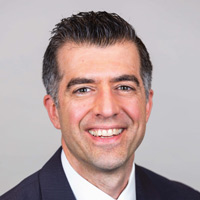What to Do with an Old Life Insurance Policy
Is that life insurance policy you bought decades ago still serving a good purpose once you retire, or could you be doing something better with it?


Mary retired several years ago and was living a modest, yet comfortable life provided by her Social Security income and retirement savings. Having been a few years into retirement, she had a good sense of her spending habits and future needs. Yet she wasn’t sure about one piece of her financial planning: an old whole life insurance policy.
The whole life insurance policy had a small balance of roughly $25,000, yet she was still paying the premiums of $2,500 per year. With her two grown kids out of the house and her mortgage almost paid off, she wasn’t sure if she still needed the insurance.
Checking out the options
At her request, I ran her situation and the policy through my Life Insurance Optimizer program to figure out the best use of the $25,000 and alternative uses of the premium she was paying (i.e., keep the policy, add to savings, pay down the mortgage, save for long-term care).
From just $107.88 $24.99 for Kiplinger Personal Finance
Be a smarter, better informed investor.

Sign up for Kiplinger’s Free Newsletters
Profit and prosper with the best of expert advice on investing, taxes, retirement, personal finance and more - straight to your e-mail.
Profit and prosper with the best of expert advice - straight to your e-mail.
The optimizer provided several options. For instance, she could withdraw the cash and cancel the policy, then use the proceeds to pay down her mortgage. Or continue to pay the premiums until the policy was what we call self-completing, or able to pay for itself, which was in five years. But the one solution that had the most impact to her overall financial future success was a tax-free transfer from her old whole life policy to a hybrid long-term care/life insurance policy. The new hybrid policy provided substantial benefits to cover the potential future cost of a nursing home or home health care. That was extremely important to her, given she didn’t want to burden her kids or use up her nest egg, but also because the optimizer showed a very low retirement success rate if she needed long-term care in the future.
This all hit home with her, especially given women tend to live longer than men and have higher rates of disability and chronic health problems, she understood she could be at a higher risk of needing care. The new hybrid long-term care life insurance policy would reimburse her for home health care, assisted living and skilled nursing home care, assuming she qualified (unable to perform two out of the six daily living activities). As an added benefit, the life insurance death benefit of the new hybrid policy would pay off her mortgage if she passed away, assuming she didn’t use the policy for long-term care.
Finally, the $25,000 in the existing whole life policy would roll over tax-free via a 1035 exchange into the new hybrid policy, effectively paying the premiums for the first four years. Though she would have to pay out of pocket for the next six years (a 10-pay policy), the premiums were still affordable to her. And, if she never used the policy and wanted her money back, the company would refund 90% of her premiums paid after year 5.
Of course, any plan has its pros and cons. Consumers need to be aware that if they don't keep up with the premium payments the policy could lapse, and they could lose all they contributed. Finding a premium one can stick to for the 10-year duration is important. Mary was very conservative, and she had the money in a bank account not earning much, so moving cash plus the whole life cash value to the new policy did not come with a significant opportunity cost for her. For more aggressive investors, or for those who can self-insure the long-term care risk, the solution may be different.
As mentioned earlier, one could take the whole life cash value and invest it in the stock market for greater returns, and greater risk. But the optimizer showed that for Mary this would not have as significant impact, given the $25,000 and premium savings would never equal the long-term care benefits provided from the policy in her lifetime and she could not afford to self-insure the risk.
Making your move
Mary was extremely happy with the idea. The fact of the matter is, Mary outgrew her old whole life policy. While it served a useful purpose when she was younger and the kids were in college, like a lot of people, her situation was different now. Retirement security was her main concern, and it was time for her insurance coverage to change with her.
The lesson for those contemplating the usefulness of an old life insurance policy is that there are options that may be better suited to your present needs. It all starts with a review, a plan and a careful conversation around the options. But best to start early, as not all options are available the longer one waits given health changes, costs increases and product changes.
Investment advisory and financial planning services are offered through Summit Financial LLC, an SEC Registered Investment Adviser, 4 Campus Drive, Parsippany, NJ 07054. Tel. 973-285-3600 Fax. 973-285-3666. This material is for your information and guidance and is not intended as legal or tax advice. Clients should make all decisions regarding the tax and legal implications of their investments and plans after consulting with their independent tax or legal advisers. Individual investor portfolios must be constructed based on the individual’s financial resources, investment goals, risk tolerance, investment time horizon, tax situation and other relevant factors. Past performance is not a guarantee of future results. The views and opinions expressed in this article are solely those of the author and should not be attributed to Summit Financial LLC. Links to third-party websites are provided for your convenience and informational purposes only. Summit is not responsible for the information contained on third-party websites. The Summit financial planning design team admitted attorneys and/or CPAs, who act exclusively in a non-representative capacity with respect to Summit’s clients. Neither they nor Summit provide tax or legal advice to clients. Any tax statements contained herein were not intended or written to be used, and cannot be used, for the purpose of avoiding U.S. federal, state or local taxes.
Profit and prosper with the best of Kiplinger's advice on investing, taxes, retirement, personal finance and much more. Delivered daily. Enter your email in the box and click Sign Me Up.

Michael Aloi is a CERTIFIED FINANCIAL PLANNER™ Practitioner and Accredited Wealth Management Advisor℠ with Summit Financial, LLC. With 21 years of experience, Michael specializes in working with executives, professionals and retirees. Since he joined Summit Financial, LLC, Michael has built a process that emphasizes the integration of various facets of financial planning. Supported by a team of in-house estate and income tax specialists, Michael offers his clients coordinated solutions to scattered problems.
-
 Snowbirds: Avoid These 3 Sneaky Insurance Issues
Snowbirds: Avoid These 3 Sneaky Insurance IssuesBefore snowbirds depart for their winter retreat, they should check their insurance coverage for surprises that might arise, or else be on the hook for repairs.
-
 Hang in There With This Value Fund
Hang in There With This Value FundPatience is required for investors in the Dodge & Cox Stock Fund, but its long-term outperformance proves it's worth the wait.
-
 I'm a Financial Planner: Here's How to Make the Most of Your Charitable Giving on a Budget
I'm a Financial Planner: Here's How to Make the Most of Your Charitable Giving on a BudgetMaximizing the charitable donations you plan to make this year can help your financial plan stay on track and help give the most to the causes you care about.
-
 I'm a Wealth Planner: These 3 Steps Can See You and Your Heirs Through a Wealth Transfer
I'm a Wealth Planner: These 3 Steps Can See You and Your Heirs Through a Wealth TransferBoth givers and receivers need to be seriously strategic about communicating, understanding tax efficiency and leveraging smart money moves.
-
 Unwrapping Your Estate Plan for Your Kids: A Gift That'll Keep Giving Long After the Holidays
Unwrapping Your Estate Plan for Your Kids: A Gift That'll Keep Giving Long After the HolidaysThe holidays offer families a perfect opportunity to discuss important, often difficult topics like long-term care, estate plans and legacy.
-
 5 Ways to Teach Your Kids About Giving Back, From a Financial Planner
5 Ways to Teach Your Kids About Giving Back, From a Financial PlannerTeaching kids generosity goes beyond simple rules and can involve fun, practical strategies, such as letting them lead giving, volunteering together and more.
-
 I'm a Financial Planner: Here's How You Can Use AI to Improve Your Finances
I'm a Financial Planner: Here's How You Can Use AI to Improve Your FinancesApps can help with budgeting, saving and investing, financial coaching and debt management. But providing your personal information can also raise your risks.
-
 When Checkout Charity Gets Uncomfortable — and Maybe Even Illegal
When Checkout Charity Gets Uncomfortable — and Maybe Even IllegalCashiers asking customers to 'round up' their total for charity can cross an ethical line if there's no disclosure about the benefiting organization.
-
 Four Ways to Find Free Money to Pay for College: Affluent Families Can Apply, Too
Four Ways to Find Free Money to Pay for College: Affluent Families Can Apply, TooFamilies can access scholarships, grants and incentives by strategically positioning their students in terms of merit, skills and timing.
-
 3 Tax-Smart DAF Strategies Advisers Can Put to Work for Clients During Giving Season
3 Tax-Smart DAF Strategies Advisers Can Put to Work for Clients During Giving SeasonDonor-advised funds can help clients maximize their philanthropy through front-loading deductions, donating appreciated assets and 'bunching' contributions.